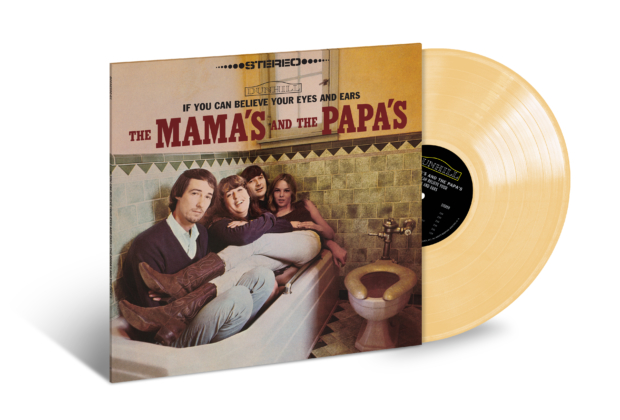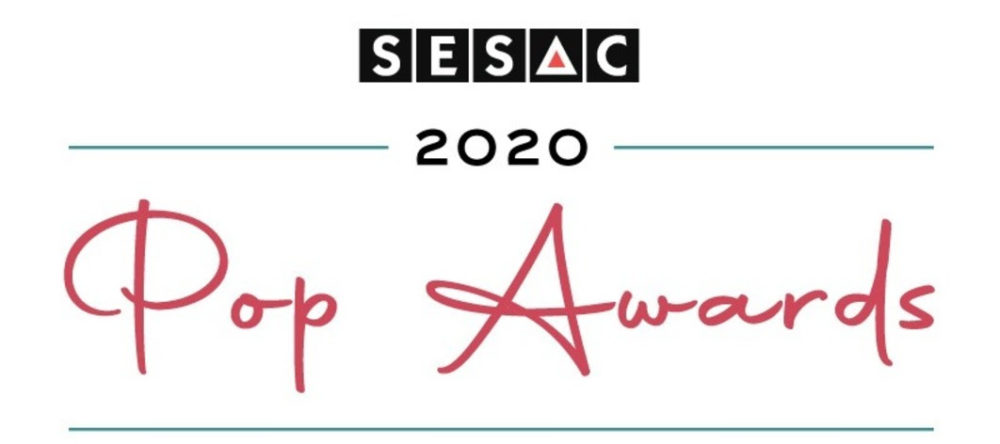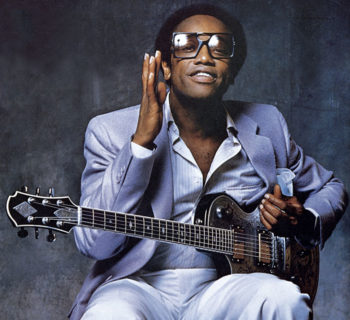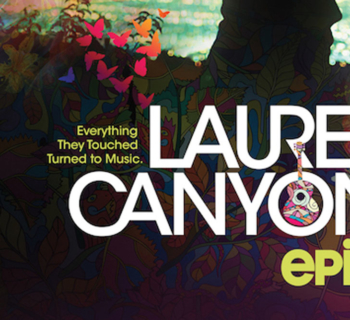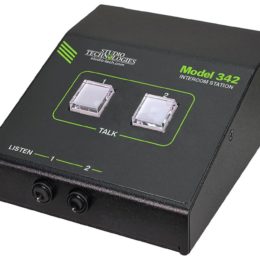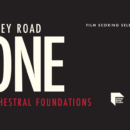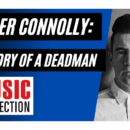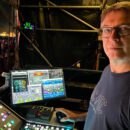On January 29, the Geffen/UMe record label is set to release the Mamas & The Papas’ If You Can Believe Your Eyes And Ears on black vinyl. The album will be available on opaque yellow vinyl exclusively at uDiscover Music and Sound of Vinyl.
Considered one of the best pop-rock albums of all time, the 12-song 1966 debut showcases the exquisite pop sensibilities and impeccable harmonies of Cass Elliot, Denny Doherty, John Phillips and Michelle Phillips. Reaching No. 1 on the Billboard album charts within months of release and spending more than 100 weeks on the chart, the Lou Adler-produced gem opens with the No. 1 hit “Monday, Monday” and includes “California Dreamin’,” which hit No. 4 on the Billboard singles chart.
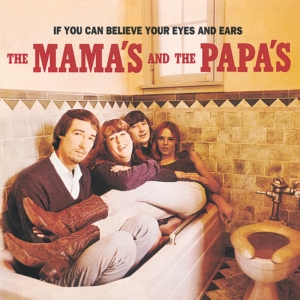
Album Cover Courtesy of Geffen/UMe
While best known for its two hits, If You Can Believe Your Eyes And Ears, features a mix of originals and covers that captivated fans and critics alike. The album is included in the top 100 of the influential reference guide 1001 Albums You Must Hear Before You Die.
In their pursuit of pop music perfection, the Mamas & The Papas signed to Dunhill Records by Adler in 1965 and disbanded shortly after their performance at the 1967 Monterey International Pop Festival, where “Monday, Monday” was first performed live.
In between, the foursome embarked on what has become a storied career during their brief time together. Contributing to their status as pop culture icons were unforgettable performances on The Ed Sullivan Show, including the John Phillips penned classic “Monday, Monday,” their interpretation of Lennon & McCartney’s “I Call Your Name” and “California Dreamin’” co-written by John and Michelle Phillips.
Both vinyl reissues will include the original Guy Webster-shot cover photo, which was censored at the time for showing a toilet. First issued on February 28, 1966, If You Can Believe Your Eyes And Ears opens with the chart-topping ode to the first day of the work week, followed by the upbeat, bass-heavy rocker “Straight Shooter.”
On “Got A Feelin’,” co-written by Denny Doherty and John Phillips, a ticking clock underscores the melancholy vibe that someone is cheating; “Go Where You Wanna Go,” “Somebody Groovy” and “Hey Girl” round out the original compositions with the musical and lyrical flair that defined their style. The Mamas & The Papas also brought their easy-listening harmonies to Leiber & Stoller’s “Spanish Harlem” and Bobby Freeman’s “Do You Wanna Dance,” while gently rocking to The Turtles’ “You Baby.” Cass Elliot’s rollicking cover of Billy Page’s “The ‘In’ Crowd” first done by Dobie Gray, closes the album.
LP
Side A
- Monday, Monday
- Straight Shooter
- Got A Feelin’
- I Call Your Name
- Do You Wanna Dance
- Go Where You Wanna Go
Side B
- California Dreamin’
- Spanish Harlem
- Somebody Groovy
- Hey Girl
- You Baby
- The “In” Crowd
After leaving their respective folk groups, the Mugwumps and the New Journeymen, in New York, singer Denny Doherty and singer-songwriter John Phillips formed a new group with John’s wife, Michelle, and Cass Elliot. The four were initially known as the Magic Circle before they settled on the Mamas and the Papas.
Signed to Dunhill Records by record producer Adler, the band released its first single, “Go Where You Wanna Go,” in 1965. “California Dreamin’” hit the charts soon after, and their debut LP, If You Can Believe Your Eyes and Ears, landed at number one on the Billboard Top 200. “Monday, Monday” was the third single from this momentous debut, and garnered the foursome a US number-one hit.
In 1966 I danced for a brief season on Dick Clark’s American Bandstand. One afternoon at the ABC-TV studios on Vine Street and Fountain Ave. in Hollywood Bob Lind and the Mamas and the Papas were the booked guests. Even though both acts were lip syncing to their current hit records on our popular AM radio station KHJ, I thought what I was hearing live in the studio was absolutely marvelous.
The sound of our city revealed in Jack Nitzsche’s arrangement of “Elusive Butterfly” and the Adler produced “California Dreamin’.”
In my 2014 book, Turn Up The Radio! Pop, Rock and Roll in Los Angeles 1956-1972, I reflected on the meteoric triumph of the Mamas and Papas.
“Their trajectory from clean-cut folkies to acid-addled pop aristocrats is both a cautionary tale—be careful what you wish for—and a validation of pure talent and ceaseless ambition. Their reckless indulgences have long since passed into tabloid infamy. What is worth celebrating, of course, is their singular weave of melody and harmony that soothed the ear like velvet. How it came to be is the quintessential Los Angeles story.”
“In 1965, I tried to sign the Mamas and the Papas to GNP Records,” talent scout and record producer/songwriter Kim Fowley recalled to me in a 2008 interview.
“I got a phone call from Cass Elliot, who I had met through James Hendricks, a songwriter. I hung out with her. She smoked pot. I didn’t. She wanted to know how the town worked.
“Gene Norman at GNP was my boss. I really respected Gene. I was A&R there at the time. [I told him,] ‘I just discovered a new band.’ ‘What do they want?’ ‘Two hundred and fifty dollars a month, plus they will do clerical.’ ‘No new artist is worth two hundred and fifty a month.”
“So I called Nik Venet, who was at Mira Records, and I was going to be involved in the music publishing. Nik helped produce ‘Hey Joe’ by the Leaves on the label. They sang over the telephone. Nik had previously met John when he was in the Journeymen, a Capitol Records act. John Phillips has a great gift for harmony in his songwriting. Nik was going to take them over to Mira the following Monday for a 3:00 pm meeting to see Randy Wood, who dated my stepmother. He was formerly with Vee-Jay Records. Nik gave John a check for $150.00 to hold them over until the meeting. They called up, looking for some grass to calm themselves down, and Barry McGuire didn’t have any. This is just before Barry hit with ‘Eve of Destruction.’
“Then Lou Adler met the group through Barry, and he signed them on the spot for three grand. They never showed up for that Mira meeting and Nik said, ‘Somebody must have grabbed them.’
“I saw John Phillips a year later at a listening party for ‘Daydream’ by the Lovin’ Spoonful. I said to John, ‘Why don’t you pay back Nik Venet the $150.00 that he gave you that was going to carry the group over until that Mira meeting?’ John then sent the check to Nik, who framed it and never cashed it. I loved the records Adler and Bones Howe subsequently did with them.”
Born in 1933 and hailing from the Boyle Heights section of East Los Angeles, Adler wasn’t planning to enter show business when he started writing songs with friend Herb Alpert.
The first four songs they did together were recorded by artists, Sam Cooke, Cowboy Copas, and Sam Butera from Louie Primas band. Adler and Alpert did a demo of a tune and took it to Bob Keane at Keane Records who offered the duo A&R jobs working with producer Bumps Blackwell.
Adler lived in 1957 with Cooke in Hollywood at the Knickerbocker Hotel. He also resided with Sam in an apartment on Saint Andrews Place in Los Angeles where George McCurn, Lou Rawls and Bumps Blackwell hung out.
In 1959, Sam, Adler and Herb Alpert wrote “(What a) Wonderful World,” a hit single for Cooke in 1960, later covered by Herman’s Hermits. Adler toured with Cooke as a road manager and attended Sam’s sessions at RCA studios.
“Sam taught me a language on how to speak with musicians, not only verbal but sign language as far as where to go musically,” Adler told me in a 2008 interview for my book Canyon of Dreams: The Magic and the Music of Laurel Canyon. He penned the Afterword, too. From 1958-1960 Adler lived in Laurel Canyon on Lookout Mountain Drive.
“Sam taught me where the drummer would go and when to layout. That was a language I had to learn and also the communication between producer and engineer. I had no musical or recording experience, so between Bumps and Sam is where I learned.”
Adler saw Cooke every Christmas and on their birthdays. Sam, along with the Everly Brothers played at Adler’s June, 1964 wedding to actress/singer Shelley Fabares.
On December 11, 1964, Sam Cooke was shot to death at a motel in downtown Los Angeles.
“Sam is never talked about as a human being,” Adler emphasized. “He’s mentioned as the great soul singer that he was and the instrument that he had, and the fact that everybody from Otis Redding to Jackie Wilson emulated him, followed him. He was just a great human being, a great guy, a great buddy with a wonderful sense of humor…”
Adler’s business acumen would then give us Johnny Rivers, the Mamas and Papas, Spirit, Merry Clayton, and Carole King, as well as the comedy of Cheech and Chong.
“One song that is Laurel Canyon-specific that John (Phillips) wrote is ‘Twelve Thirty [Young Girls Are Coming to the Canyon].’ A lot of the first songs of the Mamas and the Papas were written before I ever got to them. The music was polished. It wasn’t raw. They looked raw, that’s back to the album cover, Can You Believe Your Eyes and Ears? What that meant was ‘that sound was made by these people?’ John was never raw. He went to West Point. He came out of the Hi Lo’s and the Four Lads.”
“John Phillips was a great guy, smart, but he was power crazy, you know,” photographer Nurit Wilde told me in a 2008 interview.
“John was the person who wrote the songs and directed the group. I don’t know if John needed the applause but Cass certainly did. She had issues and wanted validation and was very talented. I met her earlier in New York when she was in The Big Three. Cass was a mensch. The ‘den mother’ thing was much more when other people were around. She was a sensitive person. The weight was really an issue. Michelle didn’t seek the spotlight.
“I loved Denny’s voice and Cass’ voice. Michelle was perfect for that band. I went to some of the recording sessions at Western Recorders. I thought John was tremendously talented. I knew Denny from Canada before he was in the Mamas and the Papas, and he was more of a laid-back person. Denny lived on Appian Way in Laurel Canyon. He had a beautiful house. I had a very short fling with Denny. We were friends and not really anything else. Sometimes I felt that he felt he was over his head, that he couldn’t cope with some of the stuff.”
“The Mamas and the Papas were the informed calm before the incoming easy coast storm of 1966 and '67,” suggested record producer and author Andrew Loog Oldham in a 2020 correspondence. “It didn't matter if your parents were next door: they were weaned on the same.
“I’d met Lou Adler in Santa Monica California at The TAMI Show in late ' 64,” ruminated Andrew in a 2007 dinner interview we had.
“He was managing the hosts, Jan & Dean and I was there with the Rolling Stones. We became fast friends. About a year later I was in LA recording the Stones at RCA; Lou asked me to come down to his Dunhill records office on South Beverly Drive. In his office were four quite ordinary, very special folk. John Phillips, Michelle Gilliam, Denny Doherty and Cass Elliot.
“They sang about a dozen songs to the accompaniment of John's acoustic guitar. They sang their whole career ‘California Dreamin',’ ‘Monday, Monday,’ ‘I Call Your Name,’ ‘Creeque Alley.’ I heard ' em all. Lou smiled. ‘Whadja think?’ I thought a lot.
“I knew my mate had his Mick and Keith in one and that was what was important. The group was almost a backdrop to what Lou and John were about, changing the name of the game and keeping it interesting.
“I know about the hits. The national anthems, the weavings as in ‘Creeque Alley’ of the Mamas and the Papas’ journey. But my total unabashed fave, the one that brings a lump to my throat and makes the pop hairs stand up on my hands is ‘Twelve Thirty.’ The transition from New York City, ‘everything there was dark and dirty’ to the Canyon is just not only magical but real, and that was the art of John Phillips. The production, of course, is a result of the sonic marriage of Adler and the group. It’s their ‘Mother’s Little Helper.’”
When Universal studio owner and sound innovator Bill Putnam came to Hollywood from Chicago in 1957, his first competition in town was Radio Recorders, which he had attempted to purchase. As United Recording was being developed and built, Studio B at United was complete, with two reverb chambers, a mix-down room, and mastering rooms, one of which had stereo.
In 1961, Putnam bought Don Blake’s Western Recorders, located next door on Sunset Boulevard. Engineers Bones Howe and Wally Heider came to United.
In 2008 I conducted an interview with the legendary engineer/producer Bones Howe.
“When Bill Putnam bought Western, he walked me down the street to see the building. Studio 3 was in the building. When Putnam opened his studio, the first thing he did was that he got a new Grampian cutting head [that] you could pump a lot of volume into. You could really pump a lot of voltage and signal into it, and it would cut a much hotter 45 than the Altec head that everybody else used for cutting LPs and 45s. UREI was the development company, and a different division of United Recording. They developed a 1176 limiter, which I ran and did all the test runs on. He had a prototype, and gave it to me in the studio to use. United just became the place to record.
“I was in the room with Lou when he first heard the Mamas and the Papas. It was in the back room at Studio 2 at Western Recorders. John had a guitar and sang four songs for us. The mix of those four voices was so amazing. You didn’t need to do much in terms of enhancement. We doubled their voices up, but it really was a great sound.
“When I was an engineer, I was there to serve the producer and the music. I never lost sight of that. I did what I was told, except I found ways I thought benefited the performance of the musicians in the studio. I made suggestions, like putting Cass and Michelle on one side and Denny and John on the other side. ‘Let’s do it this way and see how it works.’ Those became concrete formats, because what I found out is that if you put the guys close enough together, they’ll play better. Not only that, the sound will be better, because the sound doesn’t have to travel as far to the other microphone. It’s all about an ensemble sound.
“[Drummer] Hal Blaine was on everything, Larry Knechtel, and Joe Osborn . . . I discovered Joe doing those Johnny Rivers records with Lou Adler. Joe Osborn played the bass the way I thought, as a jazz player, rock ’n’ roll players should play the bass. Joe and Hal, together, really had the lock and the feel. That’s kind of how I built a rhythm section.
“Sometimes Lou would ask me about guys. Like on ‘California Dreamin’.’ He did not want to put a saxophone on it. He didn’t want a guitar solo. John [Phillips] said something about a flute. I said, ‘Bud Shank is in the back room doing a session. Bud Shank will play.’ Lou said alto flute, and Bud had [one]. I asked Bud to come into Studio 3 for our session, and he made it in one or two takes.
“When you put a rhythm section together, it has to be a rhythm section. It’s got to be a section and be able to communicate in such a way that they play together. That’s what those guys did. For me, they were the best, and I heard rhythm sections from the East and they always sounded disconnected. I always give Lou credit for being my production mentor.
“During the ‘I Saw Her Again’ session, I didn’t erase the previous vocal, and the playback went: ‘I saw her again . . .’ Lou said, ‘That’s great!’ At that moment, I understood trusting your gut.”
“That’s all John’s amazing arranging,” explained Adler. “You could hear it in the old Journeymen albums, the group that he was in before, which included Scott McKenzie and one other fellow [Richard Weissman]. Even then, his arranging was too far-out for folk music. I mean, you couldn’t listen to it and say, ‘This is a folk group.’ He was doing such far-out things. Grittier.
“I think the key element is the vocal arranging of John and his songwriting, without a doubt. And three very trained voices, musically, and the determination on Michelle’s part, who is not as musical as the other three. The individual styling of Cass is something out of the twenties or forties, like Tin Pan Alley. The style of the Mamas and the Papas was once described as ‘the girls chasing the boys’—vocally, that is.
“When you heard the result come over the speakers, it didn’t matter what you went through to get it. The job of a producer is part psychologist, part catalyst—certainly [on] the music end. It’s a lot of things. You’re locked away in a studio for quite a while, and in the case of the Mamas and the Papas, these four people exposed every so often, you have to be a psychologist at that point.”
Over this century I’ve done a few interviews with Michelle Phillips. In 2007 we chatted.
“I was born when we were living in Boyle Heights, East Los Angeles in Aliso Village. Lou Adler is from Boyle Heights, too. I first started listening to radio station KFWB at Thomas Starr King Junior High School, and then while attending John Marshall High School.
“John and I had never heard ourselves sing with anything more than one guitar when we went to audition for Lou. So, when he put together Hal Blaine, Joe Osborn, Larry Knechtel, and engineer Bones Howe, when we heard ourselves with a band, it was amazing! It just inspired us more and more. And you know, I think we were very lucky that we picked a lot of good material.
“I think that we put a lot of energy into making the material great. John was such a perfectionist, and so was Lou. That was a big romance. John and Lou were perfectly suited for each other. They bounced off each other. They really appreciated each other’s gifts.
“When we were starting our first album, I suggested we do a Jerry Leiber and Mike Stoller song, ‘I’m a Hog For You Baby,’ that I knew from the Coasters. When I sang it for them, they all laughed at me. ‘Oh God, you’ve got to be kidding.’ But they’d never heard it. And you know what then I sang the Shirelles’ ‘Will You Love Me Tomorrow’ for them. And John went, ‘I don’t know . . .’ [So I said,] ‘Okay. I got another one. ‘Dedicated to the One I Love.’ I sang that for John, and it was like his eyes lit up and his head exploded. And he responded. ‘I like that. Let’s get the lyrics and the key for it.’ Then he took that record, and made it his own. You know, it doesn’t sound like anything the Shirelles did. John took that song, and he knew what to do with it. He knew how to arrange it and make it a wonderful record for us.
“The stuff that we decided to cover was great. I mean, if you listen to our version of ‘Dancing in the Street,’ or ‘My Girl,’ or the Beatles song, ‘I Call Your Name,’ those are great covers. Because John knew that, with our vocal blend, we could make those songs great. Listen to the backgrounds in ‘My Girl.’ I know the Temptations did a fantastic version of it, but you gotta listen to our version of it, too.
“We decided to do ‘Dream a Little Dream of Me,’ that was really a song that had been co-written by a friend of my fathers, Fabian Andre, when we were living there in Mexico City.
“When Fabian died on New Year’s Eve of ’66, I found out about it in ’67, and I told John. ‘Oh my God! He wrote one of my favorite songs, ‘Dream a Little Dream of Me.’ We started to work it up. It just sort of happened, you know? What if I didn’t know Fabian had died? That song had been a hit before. It had been a hit twice. But we brought it back and gave it a whole new life.
“When John gave you a part, you had to learn these incredibly difficult parts. He would say things like, ‘You’ll thank me for this someday.’ He would keep us in the studio, doing take after take until it was perfect. We would already be complaining an hour before we finished. ‘But that’s the perfect take, John! It’s not going to get any better than that.’ ‘Yes it is. And there was just so much material.
“I came home one day in 1966 or ’67 and turned on the television, and a special from Vietnam was being broadcast. The camera panned across this audience of soldiers and marines who were fighting in Vietnam. There is such a look on their faces. This is just right in the middle of this horrendous war, and you can see it just etched on their faces. Then the camera pans across them, and there is this huge banner that says ‘California Dreamin’.’ That just shook me to my core. It became a destination anthem. I’m the co-writer of that song.”
During 2008 and 2014 I did a series of interviews with one of rock’s early innovators, photographer Guy Webster who took the cover of the Mamas and the Papas debut LP and traveled with the group during their short career.
My brother Kenneth and I wrote, captioned and assembled the only collection of Webster’s photos in Big Shots: Rock Legends and Hollywood Icons published in 2014.
“I started working with the group with Lou Adler, who discovered and produced them. Lou called me and said, ‘Barry McGuire is sending over this group and he wants us to listen to them.’ So I went into Lou’s office at Dunhill Records, and in came the four Mamas and Papas and they were visually very interesting. Michelle Phillips. Gorgeous girl. Everybody wanted to fuck Michelle. She was it. Cass was wonderful. I knew Cass really well and we were close friends. And Denny was great. What a voice. So Lou and I were the only two people in the office and they started singing ‘California Dreamin’, and Lou and I looked at each other and locked eyes. Oh my God! That is it. We just saw money signs. I went to every recording session Lou did with engineer Bones Howe.
“I did the front cover of their album, If You Can Believe Your Eyes and Ears, in the bathroom of a house that was rented at the mouth of Franklin Canyon. In 1966, we were sitting around and I think it was Cass who pulled out some grass from tin foil and lit it with all the windows and doors closed. And we were supposed to shoot our album cover. And we were all really stoned. I couldn’t set up my tripod.
“So I said, ‘We gotta shoot something.’ And in that apartment was that 1920s and 1930s bathroom with all the tile. I put them in the bathtub and I set up my tripod and my big two-and-a-quarter camera and shot that picture. And in that picture for the album cover, shot with my wide angle lens, was the toilet. I had no idea when we produced this and neither did Lou. You can’t put a toilet on the cover of anything and sell it at Sears or one of those chain stores. They will not allow it. So Lou came up with a great idea, to put a little sticker on the shrink-wrap that said, ‘Including ‘California Dreamin’.’ And that covered the toilet. Kid opens it up and there it is.
“It became one of the most controversial album covers of its day which pleased us to no end I became best friends with the Mamas and the Papas. John Phillips was from another world. You see, John Phillips became a hippie, but he wasn’t. When I first met him, he was not a hippie. He was a bright folk singer who could write beautiful songs. John Phillips and I could be friends. The group was educated. John and I could talk philosophy, religion, and politics. I think John helped Lou and Lou brought John into the modern world of music publishing.
“I was also with Lou and the group at the 1967 Monterey International Pop Festival as the official photographer for the festival and the program. The police were so nice there. I took the photo of the cop with the flower.”
“I loved The Mamas and Papas,” lauded SiriusXM deejay Rodney Bingenheimer in a 2020 telephone call we had.
“The harmonies in the studio blew my mind! I will always remember the session for ‘I Saw Here Again.’ We all know there is a ‘mistake’ in the singing when Denny comes in early. We were all around the console watching Lou Adler and Bones Howe creating magic. Lou and everyone in the entire room immediately voted to keep the ‘mistake’ on the master recording.
“I liked John Phillips. He and Michelle always had the best New Year’s parties when they lived in Bel-Air. The photographer Ed Caraeff and I witnessed the debut of Jimi Hendrix at the Whisky a Go Go and later we drove Jimi in Ed’s car to their house. Michelle was everybody’s dream. I will never forget the time when they were on The Ed Sullivan Show and you had to fall in love with her. Mama Cass was always very friendly, and went out of her way to treat street people just like the celebrities who were around. She always talked about the Beatles who we both worshipped. John Lennon was her favorite. Denny was quiet. I didn’t see him much.
“I was at some of their TV show tapings, including Dick Clark’s Where the Action Is. On one episode I was sitting beneath Michelle as they sang on a boat. I also saw the group at the Monterey International Pop Festival. The publicist Derek Taylor really hooked me and Ed Caraeff up.”
On April 27, 1966, after a Hollies’ press party event was held on Sunset Blvd. at Liberty/Imperial Records in Hollywood, Rodney Bingenheimer invited Graham Nash of the Hollies to attend a nearby Mamas and Papas recording session of “Dancing Bear” at Western Recorders. Graham then met and talked at length with group member Cass Elliot.
In a 2014 interview, Graham detailed his encounter to me.
“I only went with Rodney to see Michelle. But Michelle, Denny and John Phillips were doing an overdub in the studio, and Cass was outside the studio. I started talking to Cass. You know the truth is there’s a part of me that really believes none of this would have happened without Rodney. Incredible music has been made from that moment.”
During the afternoon of April 28, 1966, matchmaker Cass picked up Graham at the Knickerbocker Hotel and introduced him to David Crosby at her house in Laurel Canyon. Crosby subsequently connected Nash to Stephen Stills, and Crosby, Stills and Nash was formed.
“We were staying in Hollywood at the Knickerbocker and she picked me up around noon in her convertible Porsche,” recollected Nash. “I said, ‘where we going?’ ‘We’ll be there in five minutes. Don’t worry.’ And drove me up to Laurel Canyon and I met Crosby. And once again, my life has never been the same…”
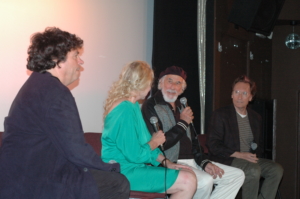
Harvey Kubernik, Michelle Phillips, Lou Adler, Kenneth Kubernik Monterey International Pop Festival Symposium 2012 at The Silent Movie Theatre West Hollywood, CA. Photo by Heather Harris.
In a few of my conversations with Michelle Phillips, Lou Adler, Andrew Loog Oldham, and Guy Webster, I asked about the Monterey 1967 event.
In 2012 Lou, Michelle, myself and my brother Kenneth did a Q. and A. session on stage at The Silent Movie Theatre on Fairfax Ave. in West Hollywood celebrating our book The Illustrated History of the Monterey International Pop Festival.
Adler, along with John Phillips of the Mamas and Papas forever altered world culture and music in 1967 with the Monterey International Pop Festival. It not only helped bring prominence to Jimi Hendrix, the Who, Janis Joplin and Otis Redding, but popularized a whole new generation of rock ‘n’ roll recording artists who were now here to play and stay.
On April 9, 1967 Paul McCartney flew in from Denver, Colorado, to Los Angeles in a Lear Jet owned by Frank Sinatra. On arrival Paul visits the Bel-Air mansion of John and Michelle Phillips of the Mamas and Papas, a pad above Sunset Blvd. formerly owned by actress Jeanette MacDonald. An aristocracy has paired the hymnists from the international pop underground along with Mama Cass Elliot and record producer Lou Adler. Paul plays guitar and strums and sings “On Top Of Old Smokey.”
That night, McCartney is quickly invited to join the advisory Board of Directors, which is planning the Monterey International Pop Festival. Adler and Phillips had just formally taken over the planning of the non-profit event, now scheduled in just two months.
“The motivation came that night at John and Michelle’s with Cass, Paul McCartney, myself and a couple of others; our conversation went to rock 'n' roll as an art form, like jazz,” stressed Adler.
“John and I were both aware of the Jazz at the Philharmonic recordings. Someone said, ‘They aren't taking rock 'n' roll musicians seriously.’ Rock 'n' roll was always viewed as a fad that would be over by the summer…but now it was more than just music, it was a lifestyle.
“McCartney’s first recommendation simultaneously along with Andrew Loog Oldham that same day was to book the Jimi Hendrix Experience since they were tearing up England at the time. We looked at Paul beyond an act. Beyond somebody that was singing on stage, as a composer. He was somebody not writing just hits, but great songs. Like ‘Michelle.’
“At John and Michelle’s home, McCartney watched cartoons on the television set, improvising a score for what was on the screen. Paul never came to one of our recording sessions, but (George) Harrison came by a couple of times. You’re fans of everybody’s records. And once again getting back to Monterey, that’s what brought those people together…that they had been fans of everyone in the other groups. And got a chance to cross and ask those questions like ‘How did you get that sound on that record?’”
“As for the Monterey International Pop Festival, John and Lou were smart, they built an infrastructure to draw talent,” underlined Michelle.
“They got the names. It was going to a good cause. What Lou and John did was that they got every person they knew to bring in somebody that they knew. It really gathered energy and momentum. Every time the phone would ring it would be Andrew Loog Oldham calling from London. Kinetic energy. He was so helpful and he wanted to be here so much and be part of it. He loved Los Angeles and he loved Lou and John. They were all very good friends, and Derek Taylor, and there was nothing like this transatlantic energy that grew every single day. Enormously exciting.”
“I was in self-imposed exile from the UK,” admitted Andrew Loog Oldham.
“In late '66 the Rolling Stones had returned to England for a rest after four years on the road. The drugs were working for and against us. I started getting calls from the fuzz warning me about Brian Jones and the condition he was in driving his Rolls-Royce up and down the Kings Road. The party was starting to be over. It was definitely over when I got warnings that I was about to be busted. So I let my bottle go and fled England for Los Angeles. The Monterey International Festival production office was on Sunset Strip in Hollywood.”
It was Andrew Loog Oldham who telephoned Phil Walden who was Otis Redding’s manager to secure Otis for Monterey. Walden then in turn dialed Atlantic Records’ Jerry Wexler to see if the festival was kosher. Wexler explained to him how logical it would be and Walden wisely then consented.
“When Otis came on stage you forgot about the logistics. We knew we were taking one small step forward for mankind. Phil Walden, his manager, was in heaven. He knew he'd just graduated from buses to planes. Phil Walden was one of the greatest managers of his time. His enthusiasm, his pure chicanery, his belief, his service to Otis was an example to the game.
“These white kids in the audience were in school. We all grew from the diversity presented in those three days. Monterey Pop gave service; it still does. I remain oh, so proud I was there and was a small part of it. Otis; the Who; Jimi Hendrix... every time I think of the music I remember the sea of faces and the rhythm of one of the crowd.
“On so many levels the Monterey International Pop Festival began what is still with us today.”
In my 2020 book Docs That Rock, Music That Matters, I talked to Oscar-winning documentarian D.A. Pennebaker about his movie Monterey Pop that captured the action.
“Bob Rafelson (The Monkees TV show, HEAD) called me up and he said ‘would you like to do a film of a concert in California?’ And I thought about it and I had just seen Bruce Brown’s Endless Summer, which is not about surfing at all, but all about California. Every kid out of high school the one thing they wanted to do was get to California, and Endless Summer didn’t hurt.
“I saw Rafelson once, maybe, but he was never involved. It was always Lou Adler and John Phillips that I dealt with. And we flew up with Cass (Elliot) to see the place and I looked at it and it was this tiny place. I had no idea what was going to happen there. I had never seen a music festival at all. Not even Newport, so I didn’t know what to expect. It had a really nice feeling to it and I loved Monterey and it’s a lovely place. And I sort of thought, ‘well these guys know what they are doing.’
“John and Lou. John was a total genius. He was part Indian and had a mystical view on everything he did. And he hadn’t been playing music for long. The Journeymen a couple of years before the Mamas & Papas. Everything he was doing was like he’d been touched and as long as the spell was there it just flowed out of him. I loved John. He was marvelous.
“Lou knew what he was doing and I knew he was a real good sound mixer ‘cause I had listened to some of the stuff he had done but I knew they were hatching a real interesting game. Which was from the beginning get rid of the money. That was the big thing. Get rid of the money. And I could see that that was gonna make it work. It was a very Zen thing. But I can see that, and later I saw what happened at Woodstock, and I really didn’t want to get involved with that at all. One of the producers of Woodstock saw the film of Monterey Pop and wanted to do a festival.”
In one of my dialogues with Michelle Phillips I wanted to know her feelings about the ongoing popularity and continued interest of the Mamas and the Papas catalogue.
“Why does our music still resonate and have influence? I’ll tell you what I think. I think that we put a lot of energy into making the material great. John was such a perfectionist. And so was Lou. That was a big romance. John and Lou were perfectly suited for each other. They bounced off each other. They really appreciated each other’s gifts. John and I had never heard ourselves sing with anything more than one guitar when we went to audition for Lou Adler. So when Lou put together Hal Blaine, Joe Osborn, Larry Knechtel, and engineer Bones Howe, when we heard ourselves with a band it was amazing! It just inspired us more and more. And you know, I think we were very lucky that we picked a lot of good material.
“As far as the Mamas and the Papas always connecting and in a way Mamas and Papas music is comforting to them. You know what I mean? They can go back into their childhood and say, ‘That was the music of my era.’ And, ‘California Dreamin’’ has surpassed any kind of era. And I think ‘Dream a Little Dream of Me’ has done the same thing. It was just licensed for a Marc Jacobs commercial.
“More than a year ago I got a phone call from a political activist who asked if I would agree to let ‘California Dreamin’ be the theme song for the ‘Dream Act.’ ‘We want to call it the ‘California Dream Act.’ And I said, ‘Yeah, but are you going to license it?’ ‘But we don’t have the money to license it.’ So I said, ‘I’ll call Universal and see if I can get them to waive the licensing on it.’ So I called Universal, the President of Licensing. ‘You know, I think we outta give them this. I feel very strongly about this and I would like to just give it to them.’ And the John Phillips estate was called.
“And it’s so much fun for me to see and hear ‘California Dreamin’ being played around these political ads. The Dream Act that enables children of Latinos who came here. I was so happy to be a part of it. Why does our music still have influence and resonate? I don’t know but I am very lucky it does.”
(Harvey Kubernik is the author of 19 books, including Canyon Of Dreams: The Magic And The Music Of Laurel Canyon and Turn Up The Radio! Rock, Pop and Roll In Los Angeles 1956-1972. Sterling/Barnes and Noble in 2018 published Harvey and Kenneth Kubernik’s The Story Of The Band: From Big Pink To The Last Waltz. For summer 2021 the duo has written a multi-narrative book on Jimi Hendrix for the publisher.
Otherworld Cottage Industries in July 2020 published Harvey’s 508-page book, Docs That Rock, Music That Matters, featuring interviews with D.A. Pennebaker, Chris Hegedus, Albert Maysles, Murray Lerner, Morgan Neville, Curtis Hanson, Michael Lindsay-Hogg, Andrew Loog Oldham, Dick Clark, Ray Manzarek, John Densmore, Robby Krieger, Travis Pike, Allan Arkush, and David Leaf, among others.
In 2020 Harvey served as Consultant on Laurel Canyon: A Place In Time documentary directed by Alison Ellwood which debuted in 2020 on the EPIX/MGM television channel. Kubernik’s writings are in several book anthologies, most notably The Rolling Stone Book Of The Beats and Drinking With Bukowski. Harvey penned a back cover endorsement for author Michael Posner’s book on Leonard Cohen that Simon & Schuster, Canada published in October 2020, Leonard Cohen, Untold Stories: The Early Years)

